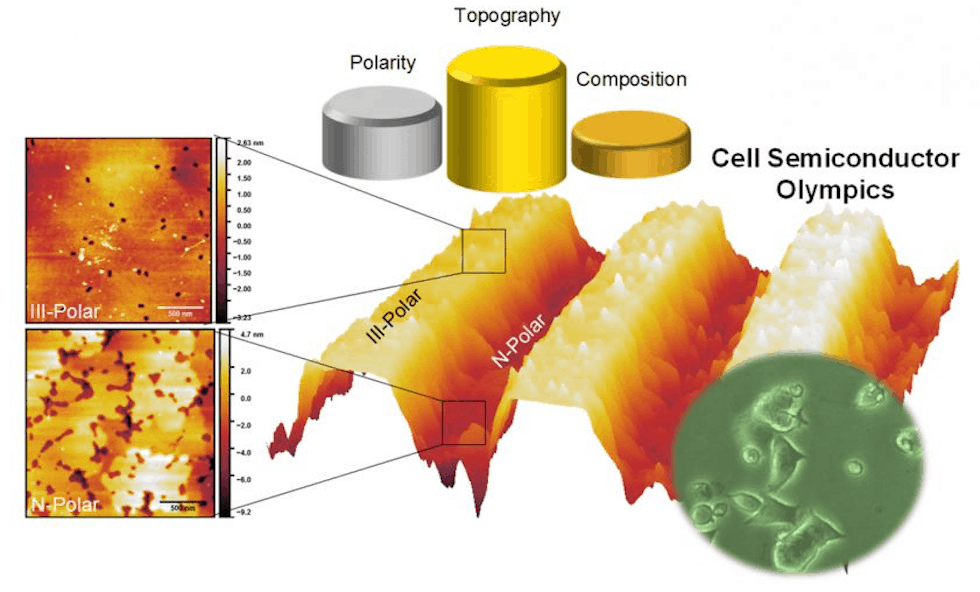Surface texture key to performance of gallium nitride in bioelectronic devices
The surface texture of gallium nitride materials can influence the health of nearby cells, a discovery that could influence the development of devices that control cellular behaviour.


According to a team at North Carolina State University, gallium nitride (GaN) materials have a unique suite of properties that make them viable candidates for bioelectronic devices. This is because it is possible to tune the charge on the surface of the materials; the materials don’t easily degrade in aqueous environments like the body; and they are nontoxic.
“But while living cells will survive in the presence of GaN, we wanted to know if we could influence the behaviour of the cells by changing the make-up of the GaN material,” said Patrick Snyder, a Ph.D. student at NC State and lead author of a paper on the work. “Basically, we wanted to know if engineering the GaN could influence the health and metabolism of the surrounding cells.”
To do this, the researchers tested three different materials: GaN, and two variations of aluminium gallium nitride – Al0.8Ga0.2N and Al0.7Ga0.3N. The researchers manipulated the surface of the materials, creating rough and smooth versions of each. The researchers then modified the surface chemistry of the materials to make them hydrophilic or hydrophobic.
Register now to continue reading
Thanks for visiting The Engineer. You’ve now reached your monthly limit of news stories. Register for free to unlock unlimited access to all of our news coverage, as well as premium content including opinion, in-depth features and special reports.
Benefits of registering
-
In-depth insights and coverage of key emerging trends
-
Unrestricted access to special reports throughout the year
-
Daily technology news delivered straight to your inbox










National Gas receives funding to develop Gravitricity underground hydrogen storage system
One single rock salt mine - Winsford - has 23 <i>MILLION </i>cubic metres of void and even allowing for 10% of that void set aside for hazardous waste...